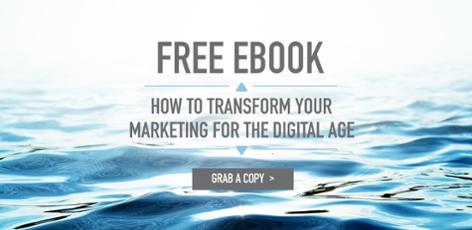Over 80% of B2B buyers start their purchasing journey online.
They're connecting with their peers and researching their options without referring to you or your competitors. This is when helpful and valuable content is highly regarded by buyers in an online world crammed with so much useless information.

As a B2B marketer, you need to get your helpful and valuable content in front of your buyers. Do this and you will dramatically increase the quantity and particularly the quality of your leads. With better quality leads, conversion rates will soar and your lead-to-revenue ratios will significantly increase. In short your funnel will flow more efficiently.
What is Content Marketing?
It means producing valuable content that you hand out to your contacts, leads, qualified prospects and customers to help them expand their understanding of the issues they face, assist them to clarify what's wrong, and help them understand how best to fix their problems – one at a time.
Content marketing should aim to trouble the buyers of your target market about the problems they face, to such a point and in such a way, that they take action. Without a reaction, marketing is a pointless exercise.
It also means you have to stop shouting at your audience and do something useful. Put your own agenda to one side, stop talking about yourself and the wonders of version 2.7.3 of you latest software or wonderful widget. Nobody, except you, and possibly your competition, cares. You have to earn the right with your prospects to talk to them about how you can help them. How? By showing them you understand their problems and issues.
The web has fundamentally changed the way we research topics and how we solve problems and gaps in our knowledge. Your target audience is engaging with you directly much later in the sales cycle. You must seek to influence their understanding via content marketing.
The 10 Rules of Engagement for Succesful Content Marketing
- Know who your buyers are: Understand their problems, their business pain and the gap between where they are now and where they want to be.
- Understand that a buyer goes through a journey: From uninterested and unaware in you and your products; to recognising they have a problem that needs fixing; to becoming interested in engaging with you about how to fix it; to being prepared to consider a commercial proposal from you; to selecting you from a list of suppliers and becoming your customer.
- Understand that the buyer's content needs to change at different stages of their journey: You must produce content that is relevant to the stage of the journey that your prospect has reached
- Create content that supports the entire funnel: Include the sales team in the lower funnel. It's important your problem-based messaging is consistent across both the marketing and sales stages of the funnel.
- Understand the "influencer architecture" of the decision making process: Who else is involved in the purchase process? There are both internal and external influencers. Your firm's content must penetrate the minds of all the influencers.
- Establish a multi-element campaign: Build your prospect's knowledge, stage by stage. For example, use educational content like blogs, white papers and eBooks that discuss the buyer's problem in the early stages and then go for content that validates your offer like demos and trials later in the buyer's journey.
- Have an automated lead nurture campaign that effectively offers that content to the buyer at the right time.
- Know when the buyer is ready: When will they be happy to engage with a member of your sales team? Use forms that ask questions related to sales readiness.
- Gather database information: Collect this from that prospect at different stages of the buyer's journey and hand over all the information gathered to that point to a sales person. Increasingly the quality of that lead data is scored to allow the sales team to rank opportunities.
- Readily accept a prospect that has leaked from the sales funnel: Continue to nurture that lead until they are ready to engage once more. Specifically designed tactics should be introduced to recycle leads who have leaked.
Content marketing which forms your Inbound Marketing approach is in direct contrast to traditional interruption-based marketing, also known as outbound marketing, builds a true and meaningful dialog with prospects.
If you'd like to learn more about evolving your marketing to include a more inbound approach that can compliment and strengthen your traditional outbound marketing methods, download our free eBook 'How to transform your marketing for the digital age' by clicking on the button below.

